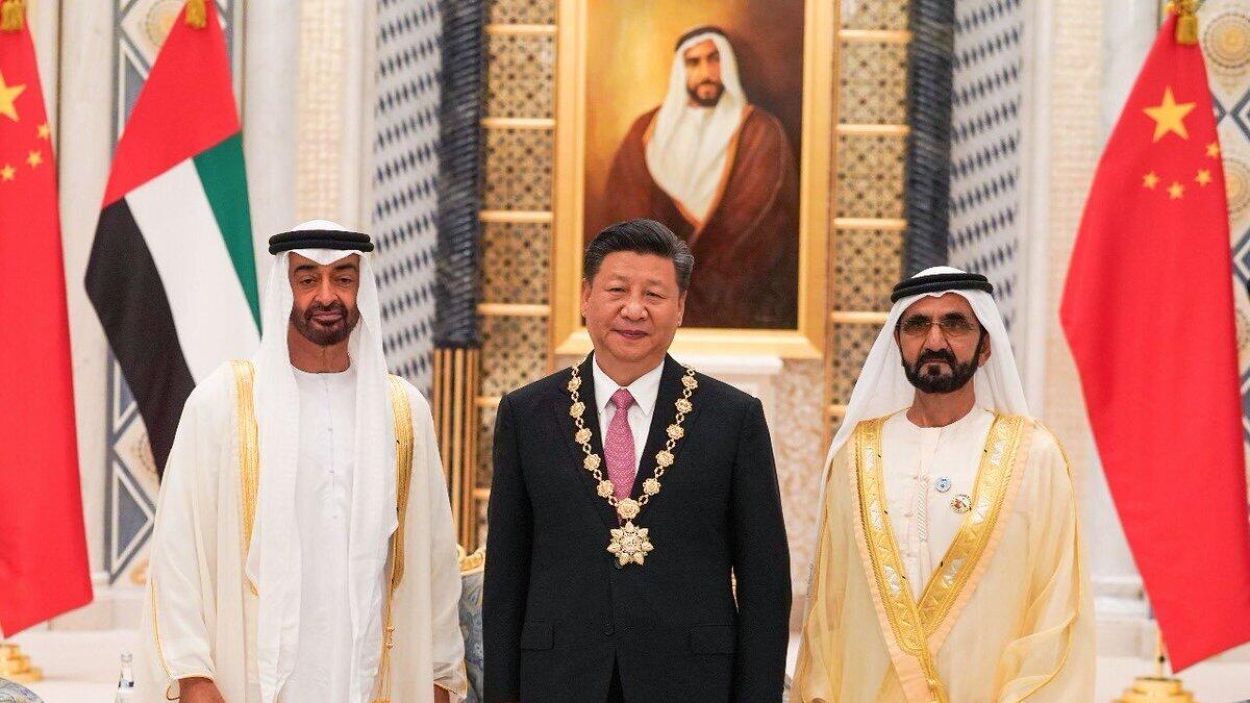Gulf Arab states have developed close ties with Beijing despite their longstanding relationship with key ally the United States, as they seek capital and technology to diversify their economies away from hydrocarbon revenues.
Gulf Countries’ Policy Shift
The primary motive catalyzing a shift in the oil-oriented policies of the Gulf countries is the timely realization that hydrocarbon energy is not sustainable.
Therefore, not wanting to be caught on the wrong foot, their full attention is gradually veering around a technology-oriented economy with the transfer of technology as the fundamental criterion of the shift.
A few months earlier, China’s NWTN — a passenger transport company — announced that it would build an electric vehicle facility in Abu Dhabi. Chinese company Xpeng Aeroht made its first public flight in the United Arab Emirates (UAE) in October 2022.
The Gulf States are reported to be actively cooperating with Chinese companies in a comprehensive program of transforming not only the economies of the Gulf States but also the entire mindset of the youth, who are showing more and more inclination towards innovation and originality.
Most of the youth in these countries receive their education in prestigious institutions of western countries, including the US. Hence the impact of socio-cultural liberalization is discernible in their lifestyle.
But the policy change and the urge for diversification of economies and means of production has become a source of irritation for the policy planners in Washington. The Gulf states, in general, and Saudi Arabia, in particular, have a history of a long and close relationship with the US.
As trusted allies of the US for a long time, Washington feels that the Gulf states are now adrift because they find the Chinese option answering their requirements for the present and future.
China Replaces The US
“Gulf Arab states should consider their relationship with the United States when dealing with China,” a US official said as tensions flared between Washington and Beijing in the wake of the coronavirus pandemic.
“Gulf Arab states have developed close ties with Beijing despite their longstanding relationship with key ally the United States as they seek capital and technology to diversify their economies away from hydrocarbon revenues. These states have to weigh the value of their partnership with the United States,” said the US Assistant Secretary of State for Near Eastern Affairs.
The US has been trying to restrict Chinese influence in the Gulf states without tangible success. Despite Joe Biden explicitly arguing in July 2022 that improving US-Saudi relations is essential to “outcompete China,” it will be an uphill task with the intensification of the Gulf-China synergy.
For example, in 2022, Huawei and Saudi Digital developed a mutual understanding for adopting technologies like cloud computing, cybersecurity, and 5G, all envisioned in the Saudi ‘Vision 2030,’ which is Riyadh’s blueprint for economic diversification.
China Enters Strategic Areas
Take the item of energy; for the last two decades, the focus was on energy, and the foreign policy of the Gulf states rotated around oil production and marketing.
Developing from a focus on energy over the last two decades, tech collaboration has become a vital instrument in furthering China’s engagement with the six Gulf Cooperation Council (GCC) countries.
The trade bill has gone up from about US$1.5 billion in 1990 to US$180 billion in 2019 — 11% of the bloc’s foreign trade — making China the GCC’s foremost trading partner.

Calling it “new oil,” the Gulf countries envision an economic diversification strategy that could add a further US$255 billion to their GDP and generate 600,000 technology-related jobs by 2030. China is likely to play the principal role in reconstructing the Gulf economy.
A significant aspect that will contribute to successful economic diversification is the entry of Israel into the eco-political restructuring of regional states. Saudi Arabia and Bahrain will likely align with the UAE in mending the fence with Israel.
As we know, great-power rivalry and Iran-Abraham Accords make space for Israel’s stepping into the region’s mainstream and development agenda. China, unlike the US, has cordial relations with Iran, which improves the chances of enhancement of Gulf–China collaboration.
Since 2019, most GCC telecom firms have signed 5G contracts with Huawei. With the UAE’s G42 launching a US$10 billion fund to invest in late-stage technology companies in 2022, its engagement with China will accelerate.
China’s strategy is to provide both infrastructure and technology. That is precisely what the Gulf leadership envisions as a priority. The Digital Silk Road, introduced in 2015 as part of the Belt and Road Initiative, is a powerful conduit for realizing this regional vision.
China promises to extend its fundamental philosophy of a power-based economy to the defense arena of the GCC. The UAE purchased Chinese Wing Loong I drones in 2016 and Wing Loong II in 2018 after the United States refused to sell its latest weaponized drones, citing the impact of the war in Yemen. In 2017, Beijing and Riyadh struck a deal to manufacture CH-4 drones in Saudi Arabia.
China’s Tech-Savvy Intervention
China’s tech role in several Asian and African countries carries far-reaching implications for global strategies and power balancing. The Gulf States and the US governments shall have to work out a rational formula for the smooth conduct of affairs. In 2020, Washington labeled Huawei’s role in the UAE’s 5G projects and the value attached to their US partnership.
Harvard University’s Belfer Center for Science and International Affairs stressed that China has “displaced the US as the world’s top high-tech manufacturer.” In terms of “artificial intelligence, 5G, quantum information science, semiconductors, biotechnology, and green energy…it has already become number one. In others, on current trajectories, it will overtake the US within the next decade.”
This, then, is the dilemma that has overtaken the think tanks in the US.
Washington would not be taking these developments lying low because China will be cutting into an extremely critical region where its interests are highly significant.
UAE’s weapons list is fairly extensive, with China reacting positively. Already, the UAE announced plans to purchase Chinese L-15 add trainers and light combat jets. US intelligence reports have also indicated that Riyadh is developing ballistic missiles with Chinese assistance.
Amid Saudi–US tension over OPEC+ decision to cut oil production, the Saudi energy minister held a virtual meeting with his Chinese counterpart to discuss cooperation on nuclear energy. This again undermines the US push for an alliance with Saudi Arabia on nuclear energy to prevent Saudi–Chinese cooperation.
In the final analysis, there has to be a balancing exercise as the world moves towards multi-polarization. The Ukrainian war has broken many entrenched perceptions, and the world order is going through a spate of realignments.
The Gulf is adjusting to a new shape and structure, among other happenings. The US will have to consider the ground realities.
- Padma Shri KN Pandita is the former Director of the Centre of Central Asian Studies at Kashmir University. Views expressed here are of the author’s.
- Mail EurAsian Times at etdesk(at)eurasiantimes.com
- Follow EurAsian Times on Google News




